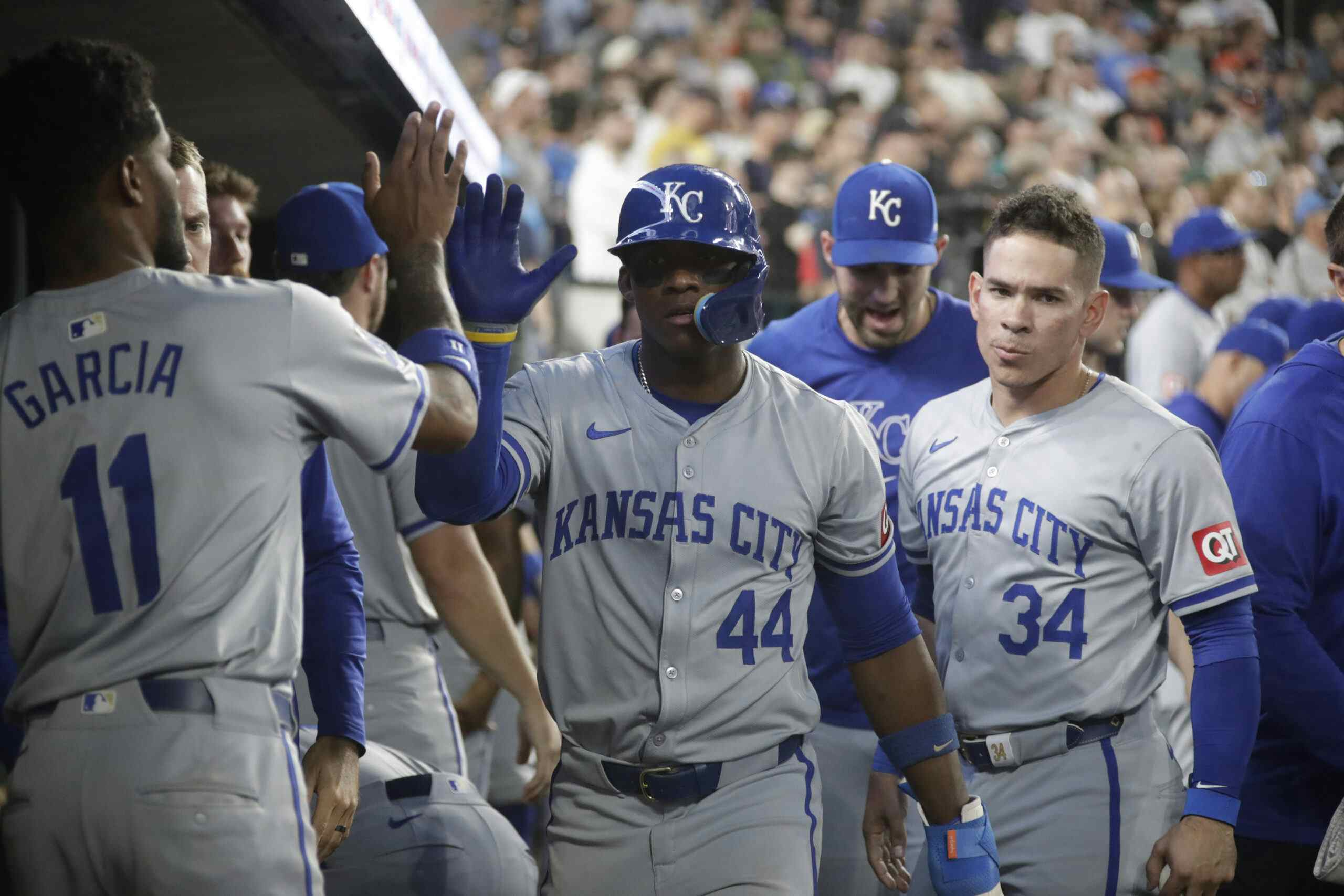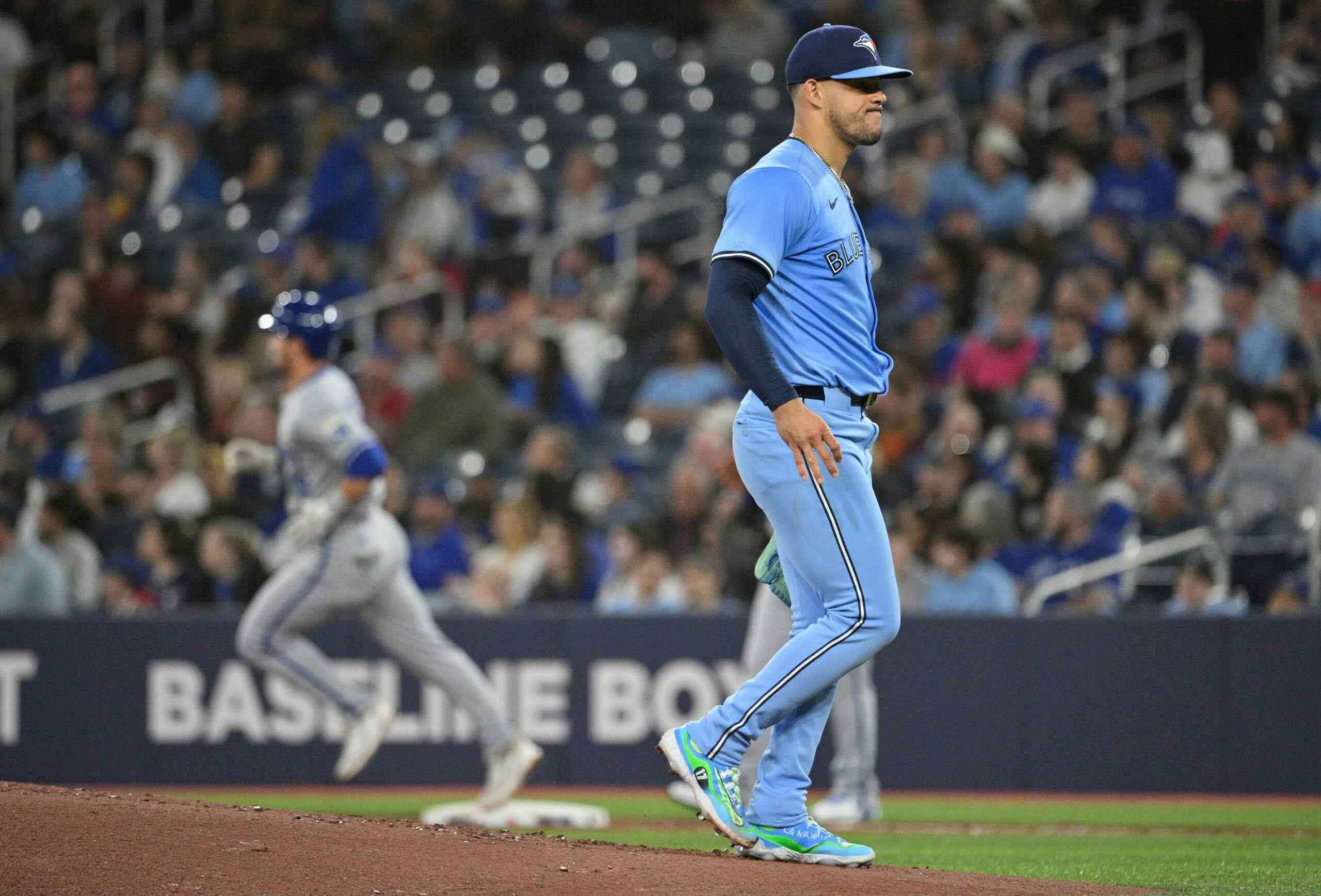The Carlos Martinez Deal and Thinking About Extensions For Stroman and Sanchez

Photo Credit: John E. Sokolowski-USA TODAY Sports
Late on Wednesday night, news broke that Carlos Martinez has agreed to a five-year, $51 million extension with the St. Louis Cardinals. It’s a deal that looks like a steal for that club, as it buys out his three arbitration years, then two years of free agency, for just $10.2 million per season — an average annual value considerably below market rate on the back end, though a bit hefty on the front.
Martinez and the Cardinals recently filed arbitration numbers of $4.25 million and $3.9 million respectively, so the AAV is a little high for right now, and probably next year as well — assuming he stays healthy and continues to perform at the level he’s shown so far in his career. St. Louis, then, is betting on his durability and performance, and Martinez is taking a whack of guaranteed money on the chances that those slip.
Why am I telling you all this? Because the Cards’ deal with Martinez provides an interesting framework for a pair of Blue Jays pitchers with strong parallels to him: Aaron Sanchez and Marcus Stroman.
Oh, there are couple of crucial differences between the players and their situations — most noticeably that Stroman is a “Super Two,” and so will go through the arbitration process four times, instead of the usual three — but there are a hell of a lot of similarities, too.
Stroman and Martinez were born four months apart in 1991 — Sanchez is a year younger, but will be in almost the exact same spot next winter. All three broke into their respective teams through the bullpen. They’re all groundball pitchers. And they’ve all produced rather strikingly similar results so far in their big league careers… with some caveats.
One of those is the fact that, though Martinez’s overall strikeout numbers are more impressive than the two Blue Jays starters, take away the Ks he has piled up facing pitchers in the NL and things even out considerably. For example, Martinez struck out 174 in 195.1 innings this season, but 23 of those came against pitchers. Versus non-pitchers he struck out 151 of 755 batters faced, which puts him at exactly 20% (compared to 21.5% if you include pitchers). Stroman’s rate against non-pitchers in 2016 was 19.3%, Sanchez’s was 20.4%.
The Baseball Reference version of WAR was not so kind to Stroman in 2016, but Martinez and Sanchez are awfully close: Stroman totalled 1.4 wins, Martinez 5.4, and Sanchez 4.8. FanGraphs’ version of WAR — which uses FIP, not the home-run-rate-regressing xFIP — puts them on more even footing: 3.6 for Stroman, 3.3 for Martinez, 3.9 for Sanchez.
Mostly because I think it better passes the eye test, I’m generally more comfortable with the BR version — though I also like FanGraphs’ RA9-WAR, which uses runs allowed in place of FIP, and bumps Stroman up to 2.6 wins in 2016, with Martinez at 5.4 and Sanchez at 5.6. And RA9-WAR for the second half looks even better for Stro, as he’s at 1.7 to 2.0 for Martinez and 2.1 for Sanchy.
All of which is to say: they’re similar enough pitchers that this exercise is worth continuing with all three. Especially so because Stroman, who as yet is behind the other two in terms of actual results yielded, gets an extra trip through arbitration. Stroman and the Jays filed at $3.4 million and $3.1 million respectively this winter — lower numbers than Martinez and the Cardinals largely because Marcus lost almost all of his 2015 season to a knee injury, and the precedents-based arbitration system still rewards things like win totals, strikeout totals, innings totals (or maybe starts), etc. If all goes well, I’d guess he’s looking at something north of $7 million in his second year of arbitration, then $10 or $11 million when he’s Arb3, with that extra year potentially pushing his salary to something like $15 million in his walk year. Yeah, it’s a big if that he’ll stay healthy and productive enough to hit all of those marks — because of the nature of pitchers it’s, honestly, more likely than not that he won’t — but these are the sorts of calculations that need to be underway for the Jays (and which I’m sure already are).
In the above scenario, Stroman would make about $35 million over four seasons before getting really expensive in free agency. Maybe the Jays would gladly take that and move on, or at the very least put a decision off until later in his career. But $35 million in his arbitration years looks to me like a best case scenario for Stroman, and he could hedge against a dip in health or performance while getting a bunch of guaranteed money if he’d take something like $30 million over four years, perhaps with a couple of $10 million club options on there, too. Or how about $40 million over five, with a club option for a sixth?
I’m just spitballin’, of course. And in this market we’ve heard a whole lot over the years about the danger of long-term pitcher contracts — and have seen the consequences of even moderate bets gone awry, as on Ricky Romero — but could those sorts of ideas work for both sides? I think they certainly could. Neither suggestion is quite the Martinez deal, but his new pact with the Cardinals is at least something of a starting point.
And it especially looks like a starting point for Sanchez — even if we’re supposed to believe that such discussions may be rendered moot by the fact that Aaron has hired Scott Boras.
If Sanchez repeats his successful 2016 season this year, next winter he’ll be in almost exactly the same place as Martinez is now: 25 years old, entering arbitration for the first of three passes, coming off a pair of four-ish win seasons, groundball guy, similar in terms of strikeouts, walk rate, career numbers, and health.
If that’s the case, a deal like the one Martinez just took will look like a no-brainer for the Jays — just as I think this does the Cardinals.
My guesses at salaries are hardly to be taken as gospel, but the best case scenario for Martinez was probably something around $25 million over three years in arbitration (4-8-12), and then a long-term deal around that much per year. Maybe that’s even short changing him, but taking that as a nice round starting point, he could have made $75 million over these five years, with a lot more still coming to him. But it would have been a significant gamble on his health and production. I completely understand why he’d take $50 million guaranteed now, with a chance still at a lucrative free agent contract as he turns 30.
We should all only hope that we get there with Sanchez!
Recent articles from Andrew Stoeten





